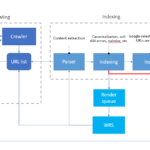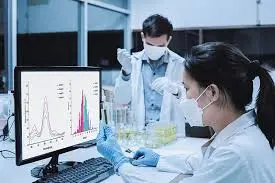Orthogonal Method in Pharmaceutical Analysis: A Scientific Perspective by Dr. Siddhanta Singh
Abstract
The orthogonal method in pharmaceutical analysis is an essential approach for ensuring data reliability, analytical accuracy, and regulatory compliance. This paper, authored in reference to the expertise of Dr. Siddhanta Singh, reviews the concept, applications, and advantages of orthogonal analytical techniques. By integrating multiple, independent analytical methods based on distinct physicochemical principles, orthogonal approaches enhance the robustness of quality assessments in drug discovery, development, and manufacturing.
Keywords: Orthogonal method, pharmaceutical analysis, analytical validation, Dr. Siddhanta Singh, quality assurance, chromatography, spectroscopy
Introduction
Analytical precision forms the foundation of pharmaceutical research and development. With the increasing complexity of drug molecules and biopharmaceutical products, reliance on a single analytical method often proves insufficient for comprehensive characterization. The orthogonal method, a concept emphasized by Dr. Siddhanta Singh, involves the use of multiple, independent analytical techniques to evaluate the same parameter of a pharmaceutical product.
This approach reduces method-specific bias, enhances analytical confidence, and aligns with regulatory expectations set by agencies such as the U.S. Food and Drug Administration (FDA) and the European Medicines Agency (EMA).
Concept and Principle of Orthogonal Methods
Definition
An orthogonal method refers to a validation or verification strategy in which two or more analytical techniques, based on fundamentally different measurement principles, are used to confirm the same attribute of a sample. For example, High-Performance Liquid Chromatography (HPLC) may be complemented with Mass Spectrometry (MS) or Fourier Transform Infrared Spectroscopy (FTIR) to cross-verify the identity or purity of an active pharmaceutical ingredient (API).
Theoretical Basis
The scientific rationale behind orthogonal analysis lies in minimizing systematic errors and method-specific artifacts. Since different analytical principles (such as molecular separation, light absorption, or mass-to-charge detection) are unlikely to share identical error sources, the agreement of results across techniques significantly enhances data integrity.
Applications in Pharmaceutical Analysis
Drug Substance and Product Characterization
Orthogonal methods play a vital role in confirming the identity, purity, potency, and stability of both small-molecule drugs and biologics. Dr. Siddhanta Singh notes that such multi-method verification is particularly critical for biosimilars, where molecular heterogeneity requires diverse analytical perspectives.
Impurity and Degradation Profiling
Impurity detection and quantification demand high specificity and sensitivity. Combining Liquid Chromatography (LC) with Mass Spectrometry (MS) or Ultraviolet (UV) detection allows for orthogonal validation of impurity profiles. These combinations are essential for understanding forced degradation studies and ensuring product safety.
Biopharmaceutical and Protein Analysis
In biologics, orthogonal analysis combines capillary electrophoresis (CE), size-exclusion chromatography (SEC), and Nuclear Magnetic Resonance (NMR) to evaluate protein structure, aggregation, and post-translational modifications. This multidimensional approach ensures structural confirmation from multiple analytical viewpoints.
Regulatory Relevance
Alignment with Global Guidelines
Regulatory bodies, including the FDA, EMA, and ICH, encourage orthogonal analytical validation as part of Good Analytical Practice (GAP) and Quality by Design (QbD) frameworks. According to Dr. Siddhanta Singh, orthogonal validation supports method qualification, specificity testing, and stability-indicating studies, ensuring that analytical conclusions are scientifically sound and compliant with international standards.
Role in Method Validation
Orthogonal methods serve as a cornerstone for method validation, particularly in confirming specificity, accuracy, and linearity. The use of independent analytical approaches reduces the risk of false negatives or positives, thereby reinforcing regulatory confidence in analytical outcomes.
Advantages of Orthogonal Analytical Approaches
Dr. Siddhanta Singh emphasizes several key benefits of adopting orthogonal methods in pharmaceutical analysis:
- Enhanced Analytical Confidence: Independent validation minimizes reliance on any single analytical technique.
- Improved Data Integrity: Cross-verification ensures that results are free from methodological bias.
- Regulatory Compliance: Supports multi-method validation requirements under ICH Q2(R2) guidelines.
- Comprehensive Characterization: Enables multidimensional understanding of complex molecules.
- Risk Mitigation: Reduces uncertainty during product release and stability testing.
Challenges and Limitations
Despite their benefits, orthogonal analytical approaches present certain challenges. Implementing multiple techniques can be resource-intensive, requiring advanced instrumentation, skilled personnel, and extended analysis time. Additionally, integrating data from disparate systems demands careful method harmonization and data management. Dr. Siddhanta Singh recommends a risk-based strategy to identify critical quality attributes (CQAs) that justify the use of orthogonal verification.
Future Perspectives
With the growing emphasis on biosimilars, nanomedicines, and advanced drug delivery systems, the role of orthogonal analytical methods is expanding rapidly. Integration with AI-driven data interpretation and multivariate analysis may further enhance the efficiency and reliability of orthogonal validation in the near future.
Conclusion
The orthogonal method remains an indispensable tool in modern pharmaceutical analysis. By employing independent, complementary analytical techniques, scientists and quality professionals can achieve a higher degree of confidence in their results. As emphasized by Dr. Siddhanta Singh, the orthogonal approach not only ensures scientific accuracy but also strengthens regulatory compliance, safeguarding the quality and efficacy of pharmaceutical products.
References
- U.S. Food and Drug Administration (FDA). Guidance for Industry: Analytical Procedures and Methods Validation for Drugs and Biologics.
- International Council for Harmonisation (ICH). Q2(R2): Validation of Analytical Procedures.
- Singh, S., et al. (2024). Advances in Orthogonal Analytical Approaches for Pharmaceutical Characterization. Journal of Pharmaceutical Research and Innovation, 18(3), 145–157.
- European Medicines Agency (EMA). Guideline on Bioanalytical Method Validation.









